
The King of Swing
February 16, 2023
On January 16, 1938, clarinetist Benny Goodman, known as the King of Swing, and his band performed in a sold-out Carnegie Hall. They opened the concert with “Don’t Be that Way”, “Sometimes I’m Happy”, and “One O’Clock Jump”, and ended it with “Sing, Sing, Sing (with a Swing)”. The event was regarded as the most significant in jazz history. Jazz had finally been accepted by mainstream audiences
A few months later on November 5, 1938, at New York City’s Town Hall, Benny Goodman performed once again. This time it was without his band, but with the Budapest String Quartet in Mozart’s Clarinet Quintet, K. 581. Here, Goodman had no need to prove classical music’s validity. Wolfgang Amadeus Mozart had already been around for quite a while.
I was unaware of either concert, having turned one year old between them. And growing up in the 1940’s, I had no idea that Goodman and his band had touched off the Swing Era, also known as the Big Band Era, with a groundbreaking performance that took place on August 21, 1935, at the Palomar Ballroom in my own hometown of Los Angeles. Nor did I have any idea that the wildly popular era for listening and dancing was finally coming to a close. I was a violin student in those years and my attention and my dreams were focused on the world of classical music. Still, as a teenager, it became quite impossible to avoid knowing about and hearing Benny Goodman. He was in the movies, on records, and on the radio, and his playing not only was brilliant but also possessed an irresistible, yes, swing to it.
Only later as a student at the Curtis Institute of Music did I learn of Goodman’s other musical life. Alexander “Sasha” Schneider, my mentor, friend, and the second violinist of the Budapest String Quartet, told me about their Town Hall performance and recording of the Mozart Clarinet Quintet with Goodman, and how this brash young American, whose socks kept falling down, amused and impressed the four seasoned, Russian-born musicians.
Long afterwards, I went on a Marlboro Music tour performing Béla Bartók’s Contrasts with pianist Peter Serkin and clarinetist Harold Wright. There, at the top of the music page, appeared the names of violinist Joseph Szigeti and Benny Goodman, who had commissioned this great chamber music work. I soon learned that Goodman had commissioned and premiered not only the Bartók Contrasts, but also many other compositions, such as the Sonata for Clarinet and Piano by Francis Poulenc, and the Clarinet Concerto by Aaron Copland.
Goodman, the ninth of twelve children born (in 1909) to poor Jewish emigrants from the Russian Empire, grew up in the overcrowded slums of Chicago. His father, David Goodman, who loved music and felt his children should have an appreciation of it, enrolled Benny, age 10, and his two older brothers in music lessons at a nearby synagogue. Benny was given a clarinet because of his small size, and he took to it immediately. Two years of clarinet lessons followed from a member of the Chicago Symphony Orchestra, and at thirteen Benny got his first union card.
Everything I knew about Goodman’s spectacular rise from poverty to enormous artistic success simply took my breath away, although I did not know the man personally. But that changed during the late 1970s when I received a call from my old friend, pianist Peter Serkin. “How would you like to play a concert with me and Benny Goodman?” he asked. My response was something like, “Wow. Would I!”
The rehearsals and concert took place in Stamford, Connecticut, where Goodman lived. Peter and Goodman played a Brahms Sonata, followed by Mozart’s Kegelstatt Trio, K. 498, and ended with Stravinsky’s trio transcription of his L’Histoire du Soldat. As the three of us sat down to rehearse, I looked across from me at the man holding a clarinet, and couldn’t get out of my mind that he was the King of Swing. Shouldn’t I be playIng the sax, the trumpet, the drums, or anything other than viola in the Mozart or violin in the Stravinsky? And shouldn’t we be about to rehearse such numbers as “Don’t Be That Way”, “Somebody Stole My Gal”, or “Jersey Bounce”? But to my surprise, the rehearsals were surprisingly unremarkable. Goodman had turned like magic into a chamber music colleague. He was cordial, offered comments only occasionally, and accepted ours with grace. The Stravinsky’s tricky rhythms were the only thing that presented a challenge for Goodman, and he patiently worked through them. The performance went well and was a totally pleasurable experience.
Fortunately, I was not aware until some time after the concert of Goodman’s reputation as a demanding taskmaster and worse with his band. He could be arrogant, tactless, and self-serving. But if that were the case, why was he such a pussycat with Peter and me? Perhaps Goodman realized that he was no longer the boss of his band, but only a musician among equals. Or did he merely value his fine jazz performers, but regard classical musicians as some kind of exalted creatures?
It’s easy to badmouth Goodman for his treatment of fellow jazz musicians, but his history is more complicated. Black and White musicians could not play together in the 1930s. Racial segregation was enforced by Jim Crow laws in the southern states. Goodman did not care a whit about those laws. He wanted the best musicians whatever their color. And so, he hired pianist Teddy Wilson for his trio, and later vibraphonist Lionel Hampton, both African Americans. Ten years before Jackie Robinson broke the baseball major league color line, Goodman helped racial integration in America.
I figured that the Stamford concert was the last time I’d ever meet Benny Goodman, but a year or so later in London, where our Guarneri String Quartet was to perform, something statistically improbable happened: I bumped into Goodman and his daughter Rachel on the street. We stopped to chat, and before long he asked me whether I’d like to go club-hopping with them that evening. I wasn’t even sure what club-hopping meant, but I soon found out. In every one of the jazz clubs we entered, the musicians immediately recognized the King of Swing, stopped playing, and along with their entire audience gave him a standing ovation. I treasure the memories of that evening, which had all the aspects of a fanciful and unforgettable dream.
On June 12, 1986, Benny Goodman died of a heart attack. When he was discovered, struck down but still alive, he was holding his clarinet, with Mozart on the music stand.
Subscribe
Sign up to receive new stories straight to your inbox!








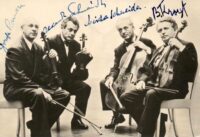





















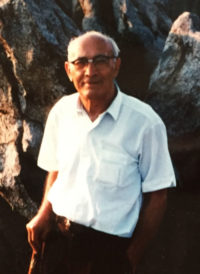


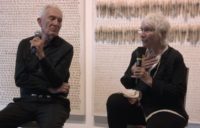


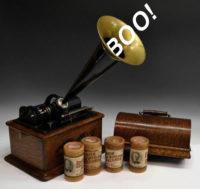
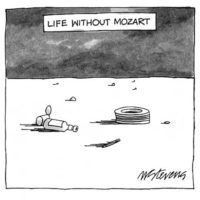















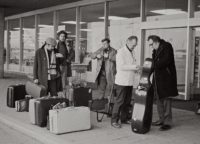



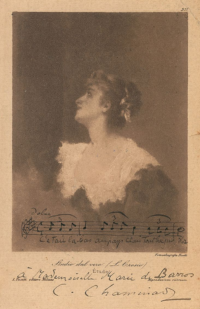




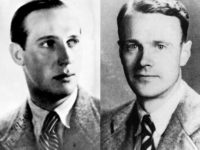


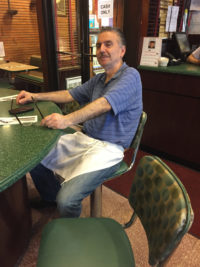



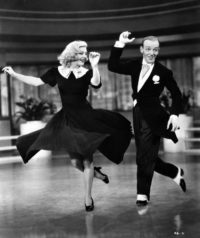







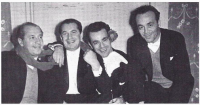
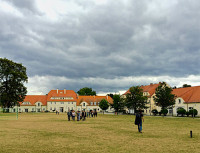


















































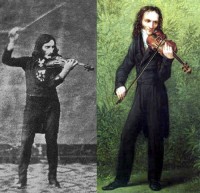



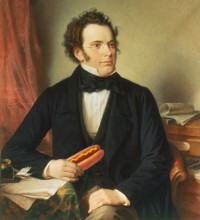

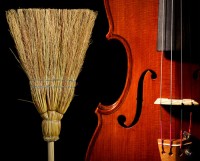





























Comments
Delightful story, are there recordings of Goodman with the Guaneri Quarter?? thanks
Jazz-classical crossover stories can be thrilling. I had the opportunity once to share Duke Ellington’s gorgeous performance of Single Petal of a Rose (captured on video) with a prominent string quartet violist who had never heard the piece. A shared delight. Your Goodman story beautifully evoked your encounters and perspectives on them and similarly made me smile. Sing, sing, sing. Write, write, write. Thank you again, Mr. Steinhardt.
Thank you for sharing this wonderful remembrance. When I was a child growing up in the 1950s, my family attended a concert at Tanglewood when Benny Goodman played the Mozart Clarinet Concerto with the Boston Symphony Orchestra. It was a wonderful concert, a cherished memory from my childhood. Your lovely recollection of Benny Goodman and playing chamber music with him evoked something very special for me. Thank you so much for your sharing.
Dear Arnold,
Thank you again for another moving and this time hair-raising story! In June of 1986, my Quartet, the Mendelssohn String Quartet had a date to play at the Mostly Mozart Festival in New York with none other than the great Benny Goodman. We had a rehearsal with him on Wednesday, June 11th. When we began the Mozart Clarinet Quintet he didn’t start playing at his entrance, but waived his hand and said : “Don’t worry, I’ll catch up”!
He was charming, warm, gracious and it was an incredible honor to be in his presence.
The Quartet traveled to Nantucket for another concert on Friday of that week. The next morning, Saturday, June 14th, 1986, Nicky Mann and I road bikes to a place for breakfast on the Island and upon our arrival saw the headline in the New York Times: Benny Goodman, King of Swing is Dead…
We looked at each other and thought Oh My God!.
Sadly, we were the last people to play with him, but what a memorable rehearsal that was!
The concert at Mostly Mozart went on with Richard Stolzman playing the clarinet. Also a great delight!
Big hugs to you Arnold!
Marcy
Wonderful remembrance. Thanks so much for bringing back Benny. Perhaps he was the first famous “crossover” artist we have in recordings?
Thanks so much for this. I didn’t know about this concert. But Peter told me that Rudolf sent him to Benny’s house, which was around the corner from their upper westside apartment when he was around 12, after Benny was seeking an accompanist for the classical repertoire. So Peter walked over to Benny’s every week to play sonatas by Milhaud, Poulenc,Berg and other (then) contemporary composers. This fueled his passion for even more far out works by Stephan
Wolpe, Webern and Messiaen, and way out jazz artists like Archie Shepp and Buell Neidlinger.
Wonderful stories, thank you Mr. Steinhardt! Regarding that 1938 Carnegie Hall concert, it is said that the master 78 rpm transcription disks from that evening were kept in Mr. Goodman’s home closet for a dozen years, until they were discovered and eventually released as a double album in the new “Long Playing” 33 rpm disk format, and that it was the first LP album to sell a million copies. A mentor of mine gave me his original copy of that 1950 Columbia LP set years ago, now digitized as part of my computer store of recordings.
BTW, that same concert date of 16 January 1938 witnessed another historic performance that was also preserved for posterity. In Vienna, Bruno Walter conducted Mahler’s Ninth Symphony with the Vienna Philharmonic shortly before he was forced to flee the city because of the Anschluss, and the recording of that performance is still widely available.
I’m wondering how faithful Benny was to the meter when he was playing classical music from a printed score. It’s a bit difficult to imagine him not “swinging” when he felt like it.
Oh Arnold! Whar a great story! You tell all of them so well and you know I love reading them but Benny Goodman?// such a hero of mine! Tell me, did he play as beautifully with you as he did that time in Town Hall? I heard that concert and will never forget it. Such heartfelt sensitivity, such an ear . I was floored to recognize what a total musician he was. Loved your story. More !
this is beautiful writing, arnold. and jill would agree.
sandy
Benny Goodman playing Mozart’s Concerto in A at Tanglewood! Lovely. I hadn’t realized he played classical music as well as jazz. Jim and I listened to him every time we drove to our New Mexico house, from Durango, many years ago. Thank you for reminding me of him. I always enjoy your notes and I miss you. Love Bid
I much enjoyed reading this tribute to Benny Goodman. The first concert I ever heard was Mr. Goodman playing the Mozart Clarinet Concerto with the Tucson Symphony orchestra. At the end of the concert, he followeed up with a jam session on the concert platform with local musicians, some of whom played with the Tucson Symphony.Among them was the great Sam Musiker, even more of a “double-agent” than Goodman, as he played Classical, jazz and Klezmer: one of the greatest klezmer clarinettists that ever lived.
We have wonderful memories of your concerts in La Jolla, and your visit with your mom to our residence. We wish you well and really enjoy the reads.
Leave a Comment
*/